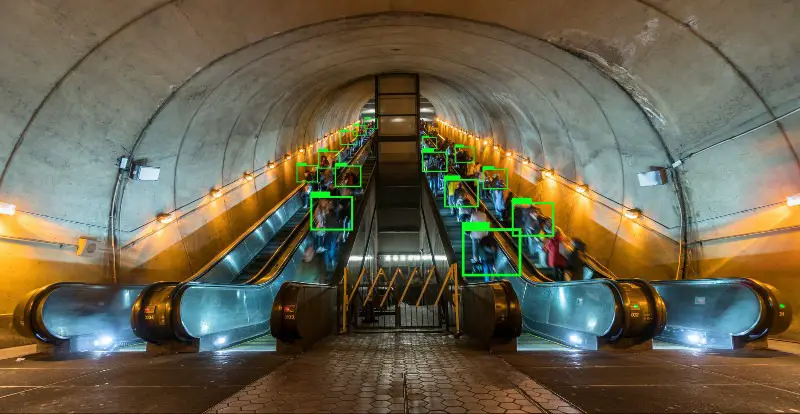The environment faces unprecedented challenges – climate change, deforestation, and pollution threaten the delicate balance of our planet. But amidst these challenges, a beacon of hope emerges: Artificial intelligence (AI). AI is rapidly transforming environmental protection, empowering us to monitor threats, optimize resource management, and predict future environmental changes with unprecedented accuracy.
A recent article in The Guardian https://www.theguardian.com/technology/2023/aug/01/techscape-environment-cost-ai-artificial-intelligence highlights the growing impact of AI on environmental conservation. By leveraging machine learning and data analysis, AI systems are becoming invaluable tools for environmental protection agencies and organizations worldwide. This article delves deep into the world of AI-powered environmental protection, exploring its inner workings, the essential components required for successful implementation, and the rigorous testing procedures that ensure its effectiveness. We’ll also peek into the future, exploring exciting possibilities for using AI to safeguard our planet.
The AI Arsenal: How AI Tackles Environmental Challenges
Imagine a tireless environmental guardian analyzing vast amounts of data in real-time, identifying threats and optimizing solutions. That’s the essence of an AI-powered environmental protection system. Here’s a breakdown of its core functionalities:
- Data Acquisition: The system ingests data from various sources:
- Remote sensing: Satellite imagery and aerial photographs provide insights into deforestation, land-use changes, and pollution levels.
- Sensor networks: Deployed throughout ecosystems, sensors collect data on air and water quality, weather patterns, and wildlife activity.
- Publicly available data sets: Weather data, historical environmental records, and citizen science projects contribute valuable information to the AI system.
- Machine Learning Magic: AI algorithms, particularly supervised learning and deep learning techniques, are trained on this data. These algorithms learn to:
- Identify patterns: They discover relationships between environmental data points to predict threats like wildfires, illegal logging, or pollution sources.
- Optimize resource allocation: AI can analyze data on energy consumption and resource use to recommend strategies for sustainable practices.
- Improve forecasting: By analyzing historical data and environmental variables, AI can predict weather patterns, droughts, and flood risks, allowing for proactive preparedness measures.
- Real-time Monitoring: AI systems continuously monitor environmental data streams, triggering alerts when anomalies or potential threats are detected.
Building the Watchtower: Essential Components for AI-powered Environmental Protection
An effective AI-powered environmental protection system necessitates a robust infrastructure built on several key components:
- High-performance computing (HPC): Analyzing massive datasets from satellites, sensor networks, and other sources demands immense computing power. HPC systems provide the necessary muscle for AI algorithms to function efficiently.
- Cloud computing: Cloud platforms offer secure and scalable storage solutions for vast environmental datasets, enabling researchers and environmental agencies to access and analyze data seamlessly.
- AI software platforms: These platforms provide user-friendly interfaces for scientists and environmental specialists to interact with AI models, visualize data, and develop targeted solutions.
- Secure data management systems: Robust cybersecurity measures are crucial to protect sensitive environmental data from unauthorized access or manipulation.
Testing the Ground: Ensuring Accuracy and Reliability
Before deploying an AI-powered environmental protection system, rigorous testing is paramount. Here’s what a comprehensive testing regime might look like:
- Data Quality Testing: Ensuring the accuracy and completeness of training data is essential for optimal system performance. Biased or incomplete data sets can lead to inaccurate predictions.
- Model Validation: The AI model itself undergoes rigorous testing using independent datasets to verify its ability to accurately identify environmental threats and patterns.
- Field Testing: The system is tested in real-world environments to assess its effectiveness in detecting threats and providing actionable insights. Stakeholder feedback is crucial during this stage.
- Explainability and Transparency: Understanding how AI models arrive at their conclusions is essential. Techniques like explainable AI (XAI) are employed to ensure transparency and build trust in the system’s decision-making.
Beyond the Watchtower: The Future of AI in Environmental Protection
The potential applications of AI in environmental protection are vast and constantly evolving. Here are two exciting examples of how AI is being used to safeguard our planet:
- Precision Conservation: AI can analyze data on wildlife populations and habitat conditions to identify areas in critical need of conservation efforts. This targeted approach allows for more effective allocation of resources and protection of endangered species. World Wildlife Fund (WWF) collaborates with Microsoft to leverage AI for elephant poaching detection using camera traps and image recognition: https://www.worldwildlife.org/projects/wildlife-insights.
- Sustainable Resource Management: AI can optimize resource management practices in agriculture, forestry, and water usage. By analyzing weather patterns, soil conditions, and historical data, AI can recommend practices that maximize yield while minimizing environmental impact. The Nature Conservancy leverages AI to optimize water management strategies in California, promoting sustainable water use practices:
Nature’s Guardian: How AI is Revolutionizing Environmental Protection (continued)
- Sustainable Resource Management: AI can optimize resource management practices in agriculture, forestry, and water usage. By analyzing weather patterns, soil conditions, and historical data, AI can recommend practices that maximize yield while minimizing environmental impact. The Nature Conservancy leverages AI to optimize water management strategies in California, promoting sustainable water use practices: https://www.nature.org/en-us/newsroom/palmyra-atoll-hawaii-artificial-intelligence-seabird-habitat-restoration/
These are just a couple of examples. As AI technology continues to evolve, we can expect even more innovative applications in environmental protection, such as:
- Climate Change Mitigation: AI can be used to model climate change scenarios, predict extreme weather events, and identify opportunities for carbon capture and storage.
- Pollution Control: AI can be employed to optimize wastewater treatment processes, monitor air pollution levels in real-time, and identify the sources of pollution for targeted remediation efforts.
- Citizen Science Integration: AI can analyze data collected by citizen science projects, such as observations of wildlife or pollution levels, supplementing traditional data collection methods and empowering the public to participate in environmental monitoring.
Collaboration is Key: Building a Sustainable Future
The successful implementation of AI in environmental protection requires collaboration between various stakeholders. Here are some key areas of collaboration:
- Academia and Research Institutions: Researchers play a crucial role in developing and refining AI models for environmental applications.
- Environmental Agencies and NGOs: These organizations possess valuable environmental data and expertise that can inform AI model development and deployment.
- Technology Companies: Tech companies can provide the necessary computing power, cloud infrastructure, and AI expertise to build and maintain effective environmental protection systems.
- Policymakers: Policymakers need to create frameworks that encourage the development and responsible use of AI for environmental goals.
By fostering collaboration and addressing the challenges of data access, ethical considerations, and explainability, we can unlock the full potential of AI to safeguard our planet for generations to come.
Call to Action:
The environment needs all hands on deck. Are you interested in getting involved in AI-powered solutions for environmental protection? Share your thoughts and ideas in the comments below! Let’s work together to build a sustainable future.
Re-imagining Retail: How AI is Shaping the Future of Shopping with Smart Experiences
The retail landscape is undergoing a dramatic transformation. Gone are the days of static displays and impersonal interactions.

Unleash the Power of AI: Bloggomatic Generates High-Quality, SEO-Optimized Content for WordPress
Unlock the full potential of your content with RePurpose. Learn how AI-driven repurposing can save time and elevate your social media presence




